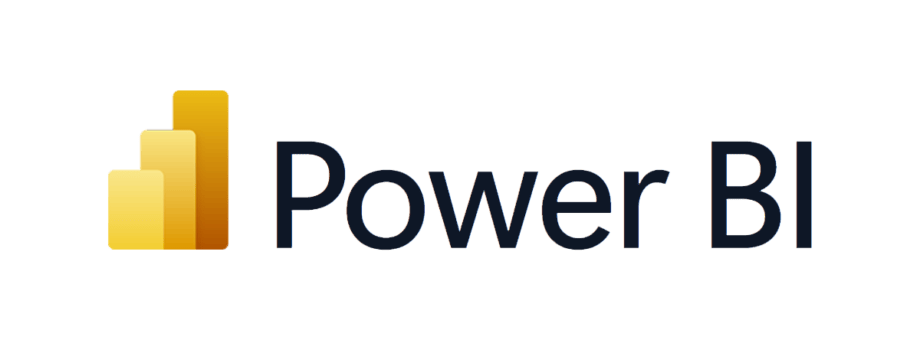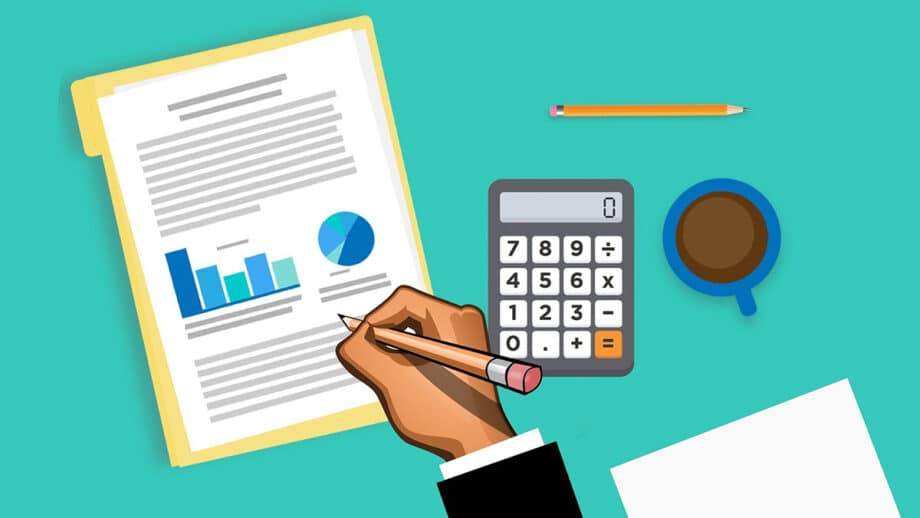Power BI for financial reporting is the most revolutionary phenomenon in the economic field of work. Power BI is a business analytics software designed by Microsoft that assists users in making data analysis presentable and engaging in the form of reports and dashboards.
It is also essential, especially in the area of financial reporting, as it gives additional information needed to improve decision-making.
Let’s approach the same in detail to understand how organizations that are into financial reporting can benefit from Power BI in their practice, examples of its application, and the core features that need to be integrated with Power BI to achieve the desired results.
What is Power BI?

Power BI is a business intelligence tool that allows users to create reports and data visualizations based on data submitted to it. Connects with other datasets like spreadsheet applications, databases, and cloud services to build real-time reports and dashboards. Reporting with Power BI has special support features that focus on satisfying the requirements of finance personnel.
Benefits of Power BI for Financial Reporting
- Real-Time Data Analysis: Another key benefit of power BI in financial reporting is the capacity for real-time data analysis. This implies that financial professionals are in a position to make their decisions at the correct time as they work with the most recent information that is available.
- Interactive Dashboards: Using Power BI dashboards, users can engage the content press uniquely presented to them; you can click on different elements of the dashboard and get another detailed report or select the required filter parameters.
- Data Visualization: There are different ways of presenting financial data using Power BI; they include charts, graphs, as well as maps. Such images make things more comprehensible, especially when analyzing figures and figures pertaining to financial matters.
- Custom Reports: For example, Power BI financial reporting samples allow users to build new reports relevant to the company’s financial parameters and indicators. This way, the report is made relevant and useful for decision-making by keeping it customized.
- Integration with Other Tools: Microsoft Power BI consultant also works well with other Microsoft tools such as Excel and SharePoint, among other tools; there are other workbench tools with which Power BI is compatible. It also enhances the possibilities for data integration from various origins since, most of the time, multiple sources are used.
Power BI Financial Reporting Examples
To illustrate how Power BI for financial reporting can be applied, here are a few examples: To ill how Power BI for financial reporting can be applied, here are a few examples:
- Budget vs. Actual Analysis: Another typical financial reporting power BI uses the identification of budgeted numbers with actual expenditures. This assists organizations in monitoring progress in handling the funds and clearly understanding where they are wasteful or economical.
- Revenue Analysis: With the help of Power BI, it is possible to create panels that would illustrate how companies’ revenue changes over time with the possibility to filter it by segments like product type or geographical area. From this visualization, it is easier to analyze revenue characteristics and therefore develop proper sales strategies.
- Expense Tracking: For business financial reporting, Power BI offers the tools to monitor the company’s expenses by categories. It can reveal how costs are spread throughout an organization and draw attention to anomalous developments.
- Profitability Analysis: With the help of tools such as Power BI financial reporting examples, the profitability of enterprises can be assessed through various characteristics or dimensions that can be departments, projects, or clients, among others. It assists in the termination of critical markets and the most effective utilization of resources.
How to Create Financial Reports in Power BI?
Creating financial reports in Power BI involves a few key steps:
- Data Import: Perhaps, the first basic step is to import the recommended financial data into Power BI. This can be done from multiple sources, like Excel sheets, SQL databases, or cloud services.
- Data Modeling: Structure and assess the data in Power BI as well. Data modeling also involves linking between different tables and establishing some form of relationship between them, as well as defining new columns that have to exist in the current database but which are rather obtained by certain calculations done on the existing columns or fields.
- Report Creation: Customizing the dashboards requires the user to drag and drop features where one can be able to develop charts, tables, and graphs, among others. Further, these elements can be adapted to meet specific needs of financial reporting.
- Dashboard Design: Develop Power Dashboards, which enable the user to drill down on the data available in the Power BI report. Let’s apply filters, slicers, and drill-through features to the application.
- Publishing and Sharing: Some of the effects of publishing the report and the dashboard include publishing the reports and dashboards to the Power service, which allows other users in the organization.
Example of Financial Reporting Dashboard
Here’s a simple table to illustrate a sample financial dashboard layout in Power BI:
| Metric | Value | Trend |
| Total Revenue: | $500,000 | Up 10% |
| Total Expenses: | $300,000 | Up 5% |
| Net Profit: | $200,000 | Up 15% |
| Budget Utilization: | 80% | Stable |
This table shows key financial metrics that can be visualized using Power BI. It provides a snapshot of the financial health of an organization.
Key Features of Power BI for Financial Reporting
- Data Integration and Automation: Power BI integrates financial data from multiple sources and automates the reporting process, reducing manual effort and minimizing errors. It supports scheduled data refreshes, ensuring that finance teams always have the latest data at their disposal.
- Interactive Dashboards and Reports: Unlike traditional static reports, Power BI allows users to create interactive dashboards with drill-down capabilities. This means users can explore financial data at different levels of granularity, such as department-wise expenses, monthly revenue trends, or profit margins by region.
- Advanced Data Analytics and Forecasting: With built-in AI and machine learning capabilities, Power BI enables predictive analytics and trend forecasting. Finance teams can use Power BI to analyze historical data and project future financial performance, helping businesses plan budgets and mitigate financial risks.
- Customizable Financial Templates: Power BI provides pre-built financial templates for commonly used reports, such as profit and loss statements, financial ratios, and tax summaries. These templates can be customized based on business requirements, saving time and effort in report generation.
- Security and Compliance: Since financial data is highly sensitive, Power BI offers enterprise-grade security with role-based access control, data encryption, and integration with Microsoft security tools. Organizations can ensure that only authorized users can access specific financial reports, protecting confidential information.

Power BI Enhancing Financial Decision-making
Power BI has revolutionized financial reporting by offering businesses a powerful and intuitive platform to analyze and visualize their financial data in real time. Unlike traditional financial reporting tools that rely heavily on static spreadsheets and manual data entry, Power BI integrates with various data sources, automates reporting, and provides interactive dashboards that enhance decision-making.
One of the key advantages of using Power BI for financial reporting is its ability to consolidate data from multiple sources, such as ERP systems, cloud services, accounting software, and databases, allowing finance teams to have a holistic view of their financial health. This eliminates the risk of errors caused by manual data handling and ensures that reports are always based on the most up-to-date information.
Additionally, Power BI enables users to create dynamic reports with drill-through capabilities, empowering stakeholders to dive deeper into financial metrics such as revenue, expenses, profit margins, and cash flow trends. The platform’s AI-powered analytics help identify patterns and anomalies, making it easier to forecast future financial performance and detect potential risks.
Another crucial aspect of Power BI in financial reporting is its security and compliance features. Financial data is highly sensitive, and organizations must ensure that only authorized personnel have access to critical reports. Power BI offers role-based access control, data encryption, and integration with Microsoft security tools to safeguard financial information from unauthorized access.
Moreover, with Power BI’s mobile accessibility, finance teams and executives can review reports from anywhere, ensuring that decision-makers have instant access to financial insights whenever needed.
Implementing Power BI for Financial Reporting
- Define Reporting Goals and KPIs: Before implementing Power BI, businesses must identify their key financial metrics and define reporting goals. This includes revenue growth, cost analysis, cash flow monitoring, and compliance tracking.
- Integrate Data Sources: Businesses should connect Power BI to their financial data sources such as accounting software, ERP systems, cloud storage, and databases. Power BI supports real-time data synchronization, ensuring that reports are always up-to-date.
- Design Interactive Dashboards: Organizations should create custom dashboards tailored to their financial needs. These dashboards should include visual elements like charts, graphs, tables, and filters to enhance data interpretation.
- Ensure Data Security and Compliance: To protect sensitive financial information, businesses should set up user access controls, encryption policies, and compliance frameworks within Power BI. Ensuring that reports are accessible only to authorized personnel is crucial.
- Train Finance Teams: Training finance professionals and executives on how to use Power BI is essential for maximizing its benefits. Businesses should provide training sessions or workshops to help teams understand data visualization, reporting, and analytical features.
Conclusion

Power BI for financial reporting is very handy and, when applied appropriately, brings significant value in analyzing and reporting financial data.
With Power BI dashboards, specially developed financial reports, and the application of real-time analysis, it is possible to obtain additional information that would be useful when making a decision. Whether you are reporting on the budget, revenue, or expense, there are many options available in Power BI for financial reporting.
Adopting good Power BI financial reporting examples and knowing how to make use of Power BI beneficially can help create reporting cons and frequently can enhance the general directing, arranging, and controlling of the financial aspect.






